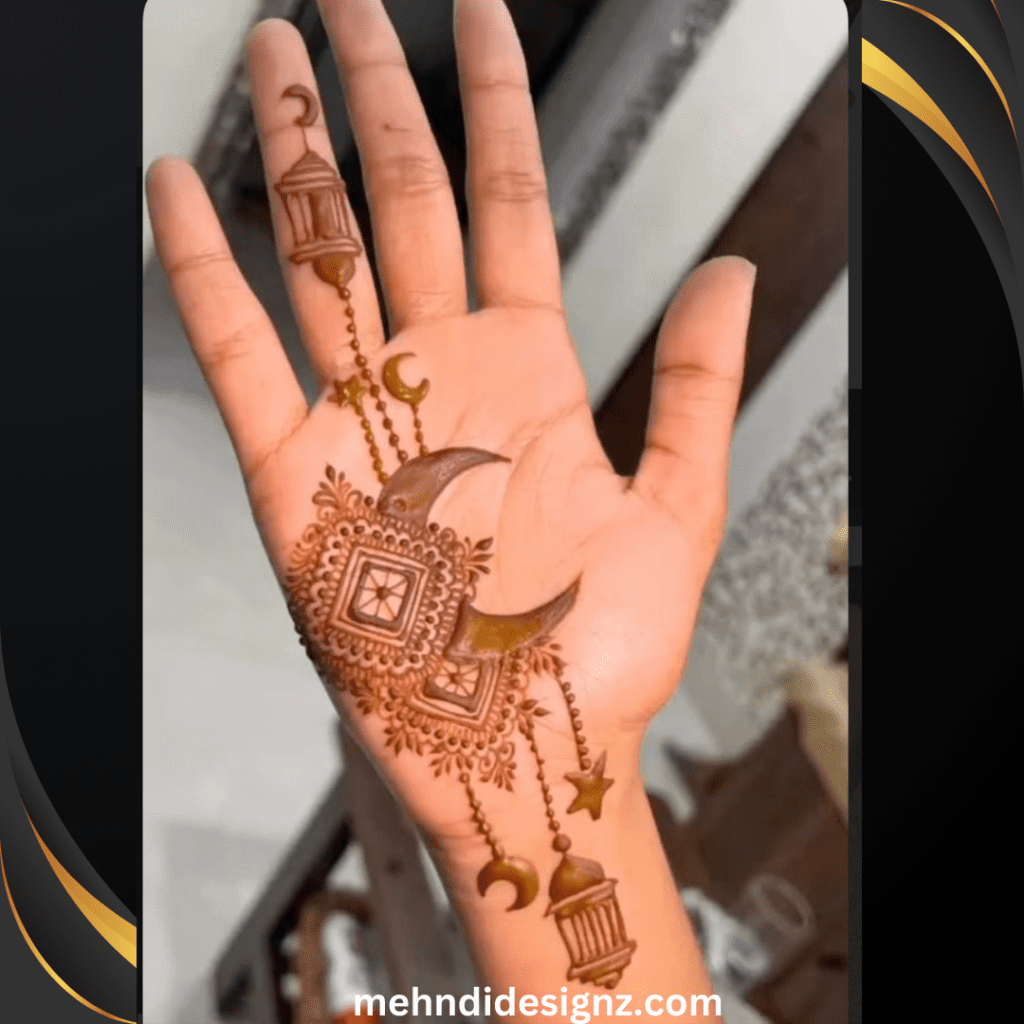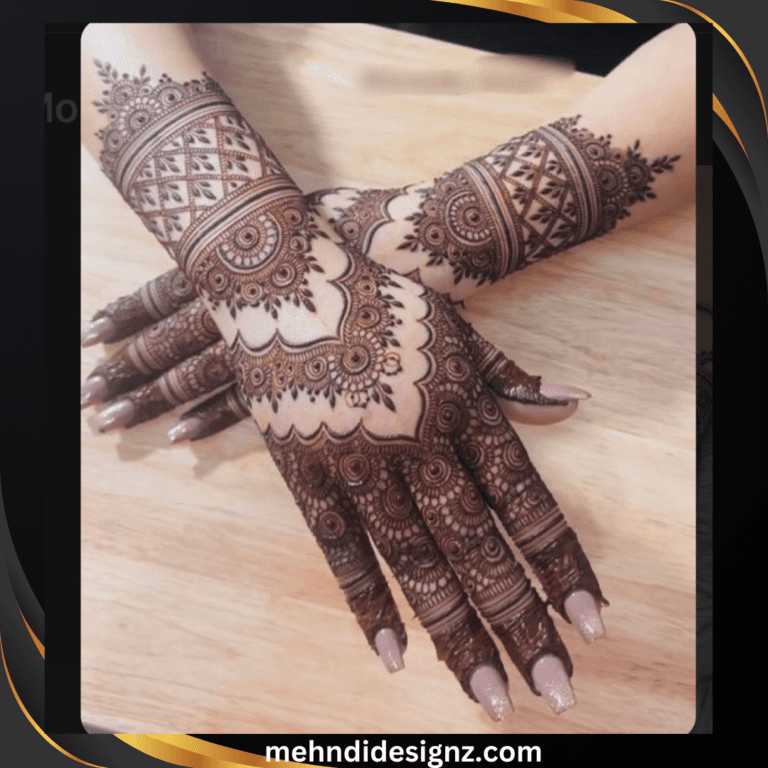Eid, the joyous culmination of Ramadan’s spiritual journey, is a festival steeped in gratitude, community, and tradition. Among its many rituals, applying mehndi (henna) holds a special place, particularly for women and children. Intricate patterns adorning hands and feet are not just decorative—they symbolize blessings, cultural identity, and the celebration of renewal. This guide explores the rich history of Eid mehndi, showcases diverse design inspirations, and offers practical tips to help you embrace this art form in 2025.
Table of Contents
TogglePopular Types of Eid Mehndi Designs
1. Traditional Designs
a) Arabic Mehndi
Features: Flowing vines, lotus blooms, and openwork patterns.
Advantage: Quick to apply, ideal for last-minute preparations.
b) Indo-Pakistani Mehndi
Features: Dense fillers, detailed peacocks, and symbolic motifs like crescents.
Signature Element: The “Khaleefa” (central palm design) surrounded by intricate lacework.
c) Moroccan & African Styles
Features: Triangular shapes, tribal lines, and abstract symmetry.
Modern Twist: Combining geometric patterns with floral accents.










2. Contemporary Trends
a) Glitter and Gemstone Mehndi
How to Achieve: Apply cosmetic-grade glitter or stick-on gems over dried henna.
Occasion: Perfect for evening Eid gatherings or mehndi parties.
b) Minimalist Mehndi
Designs: Single wristbands, fingertip dots, or tiny anklets.
Audience: Ideal for busy individuals or those preferring subtlety.
c) White and Gold Henna
Technique: Use non-staining body paint or metallic temporary ink.
Style: Creates a striking contrast on darker skin tones.
3. Fusion and Experimental Styles
Bridal Fusion: Incorporate elements like “maang tikka” patterns or jewelry-inspired chains.
Western Influences: Quotes, zodiac signs, or minimalist line art blended with traditional vines.
Abstract Art: Watercolor effects, asymmetrical shapes, or gradient shading.
Eid ul-Adha Mehndi designs
Eid ul-Adha Mehndi are a cherished part of the celebration, symbolizing joy, beauty, and tradition. As families come together to mark the end of Ramadan, women and girls adorn their hands with intricate mehndi patterns featuring floral motifs, paisleys, crescent moons, and delicate lace-like details. These designs not only enhance festive outfits but also hold cultural significance, representing happiness and blessings. Whether you prefer bold Arabic styles or detailed Indian patterns, applying mehndi has become an essential Eid ritual that adds a touch of elegance to the joyous occasion.

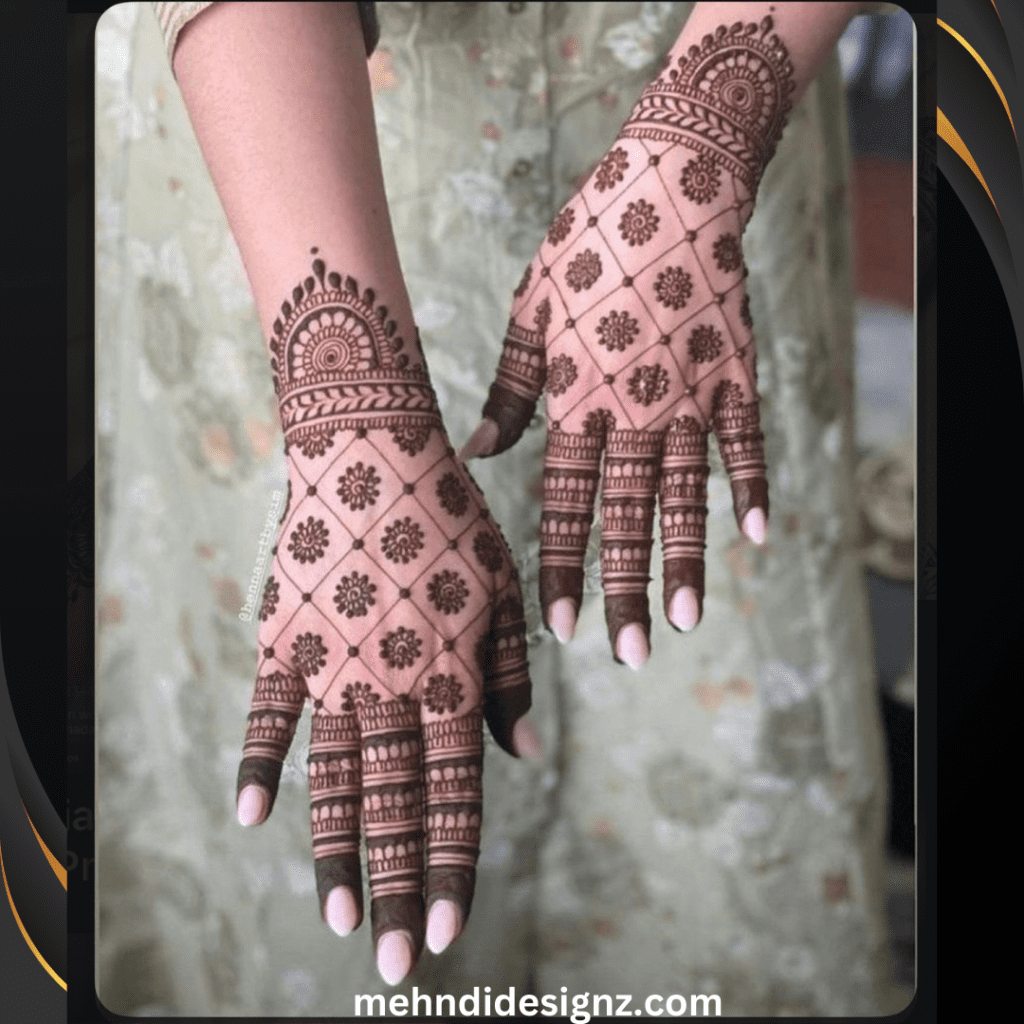



Step-by-Step Guide to Applying Eid Mehndi
1. Pre-Application Preparation
Skin Care: Exfoliate hands/feet and avoid lotions/oils 24 hours prior.
Henna Paste: Use fresh natural henna (avoid chemical-laden cones).
Tools: Fine-tip applicators, stencils (for beginners), and lemon-sugar sealant.
2. Designing Techniques
Start Simple: Begin with a central motif (e.g., a flower or mandala).
Build Layers: Add vines, leaves, and filler patterns (dots, dashes, lattices).
Balance Symmetry: Mirror designs on both hands for harmony.
3. Post-Application Care
Drying Time: Let the paste dry for 3–4 hours; avoid touching.
Removal: Gently scrape off dried henna—don’t wash!
Stain Enhancement: Apply a mix of lemon juice and sugar to deepen the color.

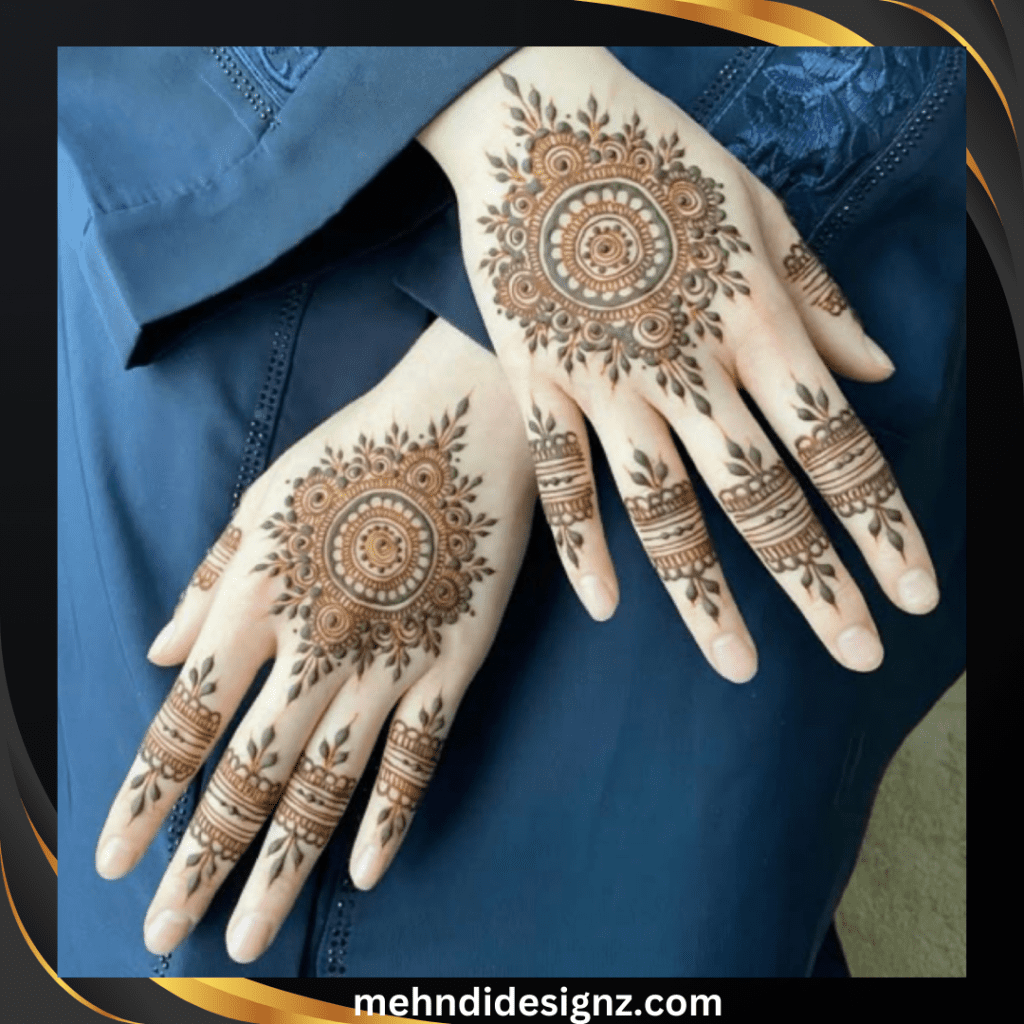

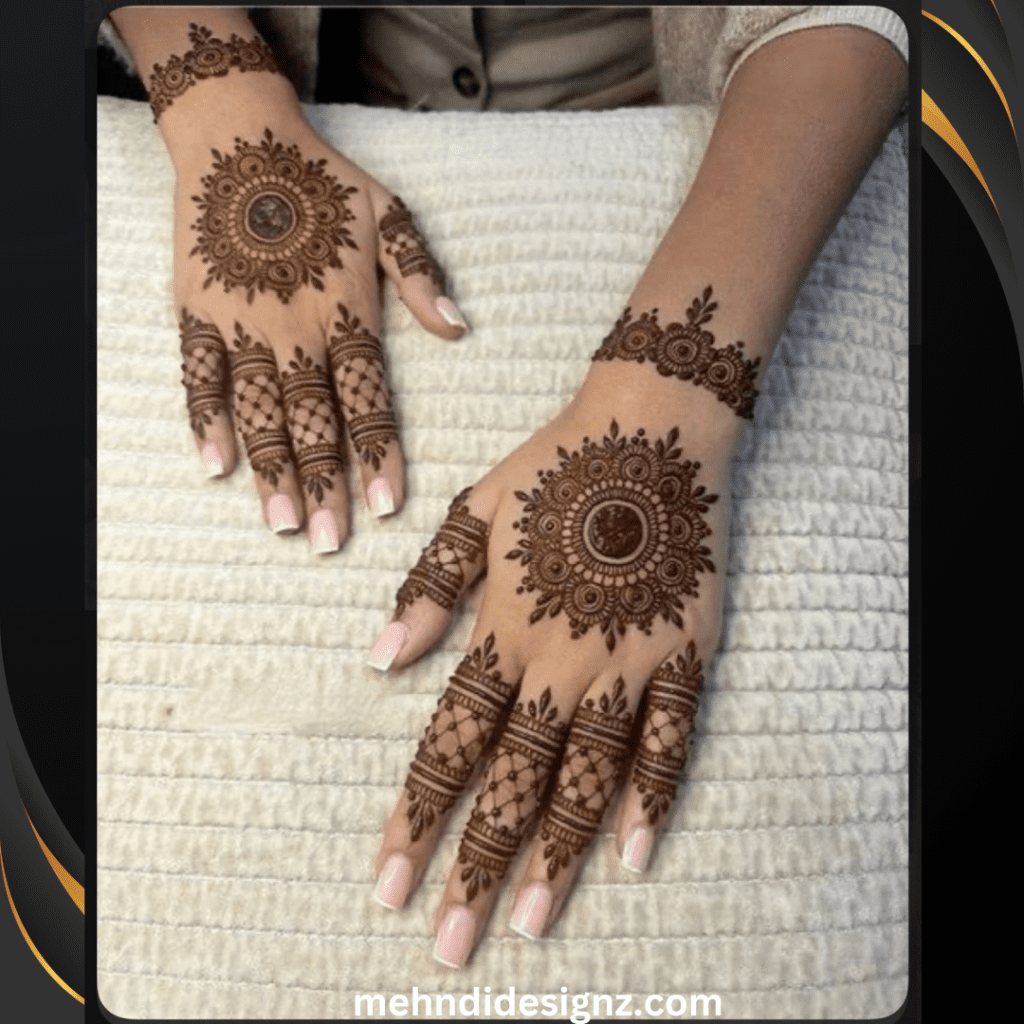

DIY Mehndi: Tips for Beginners
1. Start with Stencils
Use adhesive stencils for precise outlines. Popular options include floral borders and mandalas.
2. Practice Basic Patterns
Leaves: Draw teardrop shapes with a central vein.
Dots and Dashes: Create filler patterns between larger motifs.
Swirls: Practice fluid, continuous lines for vines.
3. Troubleshooting Common Issues
Faded Stains: Ensure henna paste is fresh and left on skin for 4+ hours.
Smudges: Fix errors with a cotton swab dipped in lemon juice.
Allergies: Patch-test store-bought henna 24 hours before use.



2025 Trends: What’s Hot in Eid Mehndi
1. Negative Space Mastery
Design Concept: Bold florals or mandalas surrounded by bare skin.
Why It’s Trending: Modern, breathable, and less time-consuming.
2. Arm Sleeves and Full-Length Art
Style: Designs stretching from fingertips to elbows or shoulders.
Pairing: Complement with short-sleeved outfits or statement jewelry.
3. Toe and Ankle Art
Details: Delicate vines, anklets, or minimalist symbols.
Footwear Pairing: Perfect with strappy sandals or open-toed heels.
4. Metallic and Jewel Tones
Technique: Add gold foil or rhinestones for a festive shimmer.
Also Check
Eid Mehndi Designs Around the World
1. South Asia: The Grandeur of Pakistani and Indian Mehndi
Signature Styles: Full-arm sleeves, “haath phool” (hand flower) designs, and intricate finger lattices.
Cultural Motifs: Elephants, peacocks, and mango-shaped paisleys.
2. Middle East: Elegance in Simplicity
Gulf Styles: Bold outlines, large floral motifs, and negative space.
Levantine Touches: Olive branches and crescent moons.
3. North Africa: Geometric Mastery
Moroccan Art: Diamond shapes, zig-zag lines, and Amazigh symbols.
Egyptian Flair: Lotus blossoms and hieroglyphic-inspired patterns.
The Cultural and Historical Roots of Eid Mehndi
1. Ancient Origins of Henna
Henna’s use dates back over 5,000 years to ancient Egypt, where it was employed for its cooling properties and symbolic significance. Cleopatra herself is said to have used henna for adornment. The practice spread across the Middle East, South Asia, and North Africa, becoming intertwined with Islamic traditions during the Mughal era.
2. Spiritual Symbolism in Islam
In Islamic culture, mehndi is more than art—it’s a Sunnah (Prophetic tradition). The Prophet Muhammad (PBUH) encouraged the use of henna for its medicinal and beautifying benefits. On Eid, it symbolizes:
Barakah (Blessings): Believed to attract divine grace.
Protection: Guarding against negative energies.
Joy and Renewal: Marking the end of Ramadan’s introspection.
3. Regional Variations
South Asia: Elaborate bridal-inspired designs with peacocks, paisleys, and mandalas.
Middle East: Bold floral and geometric patterns with negative space.
North Africa: Angular motifs inspired by Berber and Amazigh art.
FAQs: Addressing Common Concerns
Q: Can I apply mehndi during Ramadan?
A: Yes! Many apply it on Chaand Raat (the night before Eid) as part of the festivities.
Q: How to make henna last longer?
A: Avoid water for 12 hours, moisturize with oil, and avoid exfoliants.
Q: Are there henna alternatives for sensitive skin?
A: Try jagua gel (stains blue-black) or non-staining glitter tattoos.
Q: Can I exercise after applying mehndi?
A: Wait until the paste is fully dry to avoid sweat smudging the design.
Conclusion: Embracing Tradition with Creativity
Eid mehndi is a beautiful bridge between heritage and self-expression. Whether you opt for a timeless paisley motif or experiment with glittering gemstones, let your designs reflect your personality and joy. This Eid, may your hands tell stories of culture, faith, and celebration.
Eid Mubarak!
Pic Credit: All pics are from Instagram and Pinterest. Credit goes to all the original creators

